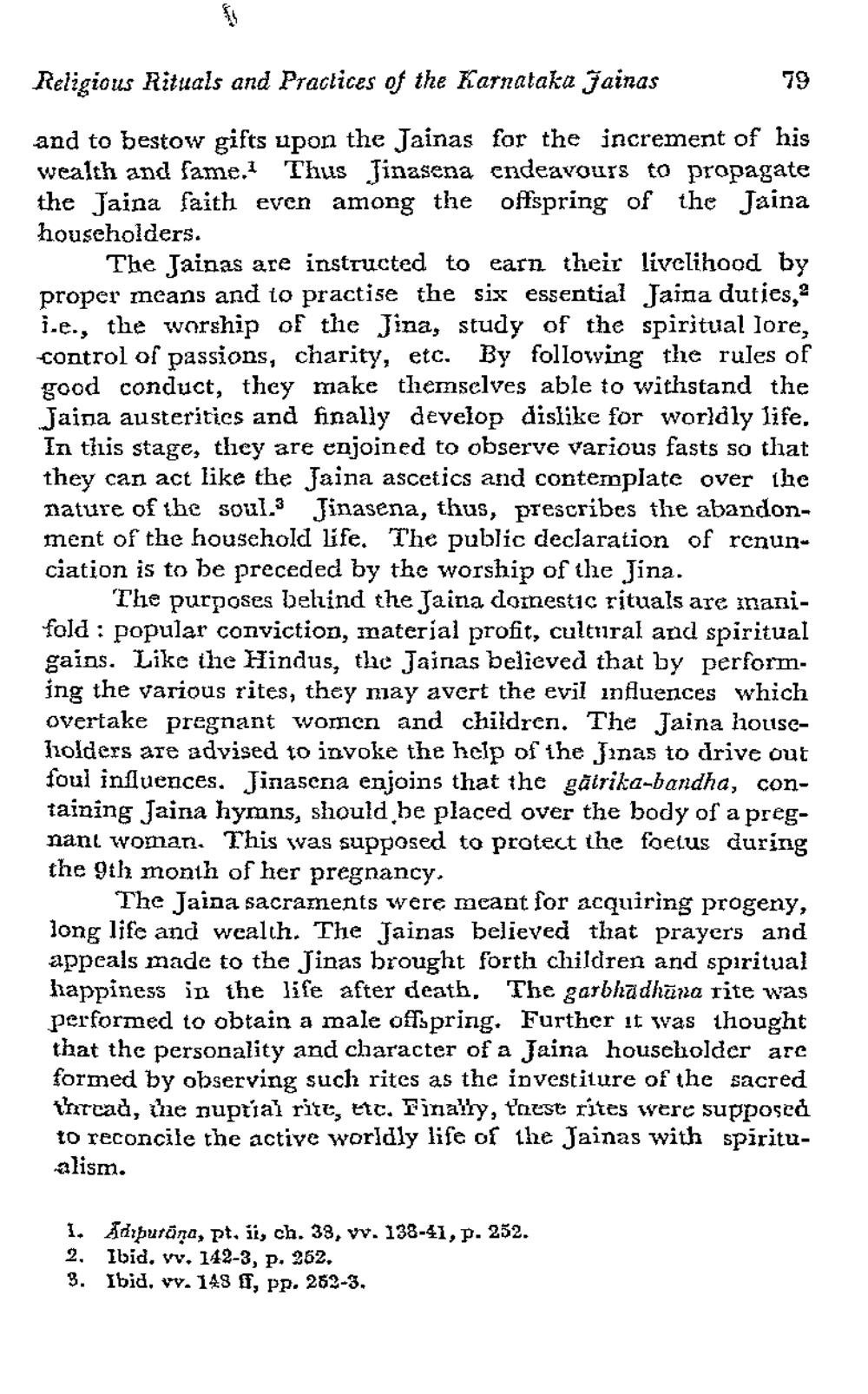________________
Religious Rituals and Practices of the Karnataka Jainas
and to bestow gifts upon the Jainas for the increment of his wealth and fame. Thus Tinasena endeavours to propagate the Jaina faith even among the offspring of the Jaina householders.
The Jainas are instructed to earn their livelihood by proper means and to practise the six essential Jaina duties, i.e., the worship of the Jina, study of the spiritual lore, control of passions, charity, etc. By following the rules of good conduct, they make themselves able to withstand the Jaina austeritics and finally develop dislike for worldly life, In this stage, they are enjoined to observe various fasts so that they can act like the faina ascetics and contemplate over the nature of the soul.3 Jinasena, thus, prescribes the abandonment of the household life. The public declaration of rcnun. ciation is to be preceded by the worship of the Jina.
The purposes behind the Jaina domestic rituals are inanifold : popular conviction, material profit, cultural and spiritual gains. Like the Hindus, the Jainas believed that by performing the various rites, they may avert the evil influences which overtake pregnant women and children. The Jaina householders are advised to invoke the help of the Jinas to drive out foul influences. Jinasena enjoins that the găirika-bandha, containing Jaina hymns, should be placed over the body of a pregnant woman. This was supposed to protect the foetus during the 9th month of her pregnancy
The Jaina sacraments were meant for acquiring progeny, long life and wealth. The Jainas believed that prayers and appeals made to the Jinas brought forth children and spiritual happiness in the life after death, The garbhadhūna rite was performed to obtain a male offspring. Further it was thought that the personality and character of a Jaina householder are formed by observing such rites as the investiture of the sacred thread, the nuptial rire, etc. Finally, taust rites were supposed to reconcile the active worldly life of the Jainas with spiritualism.
1. 2. 3.
Adipurono, pt. ii, ch. 33, w. 138-41, p. 252. Ibid. vv. 142-3, p. 262, Ibid. vy. 148 T, pp. 252-3.




